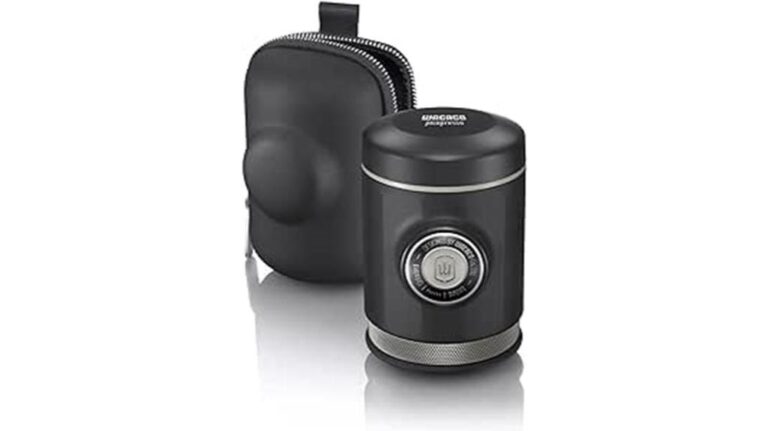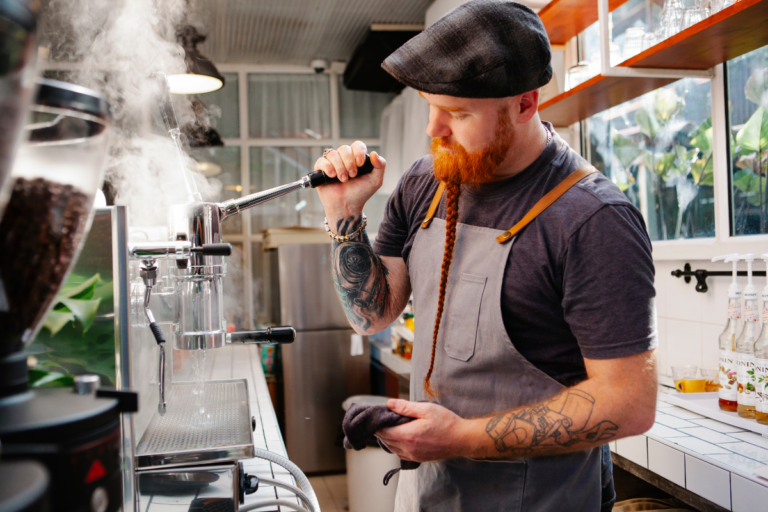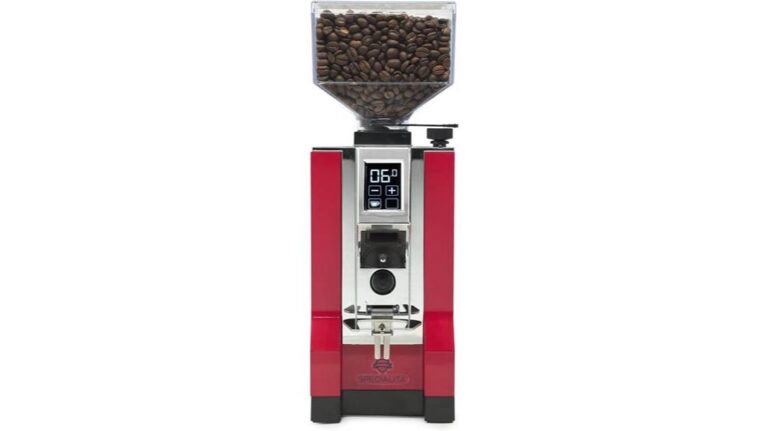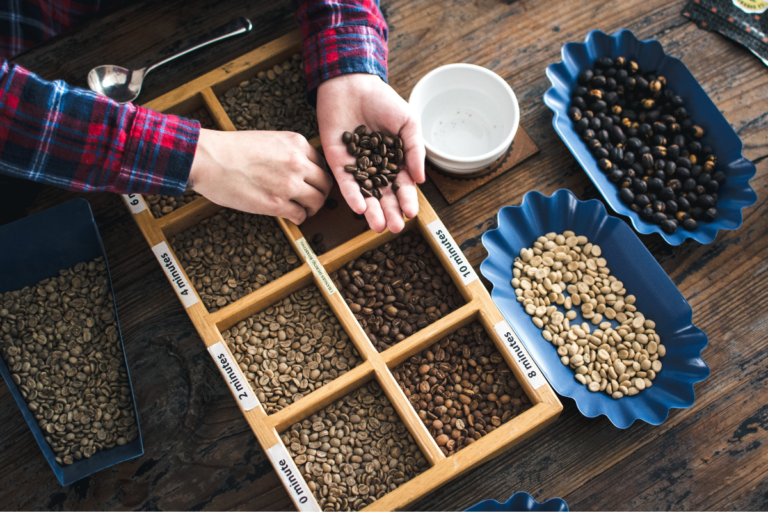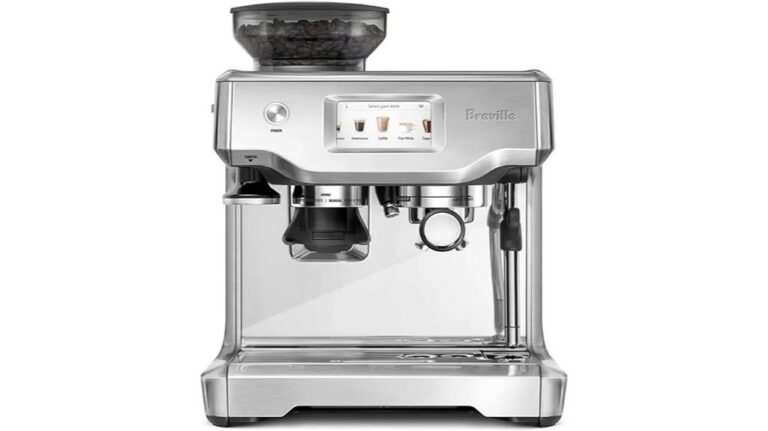Pour Over Vs. French Press
Among the various coffee brewing methods, pour over and French press stand out for their distinct approaches and the unique flavors they produce. The pour over method involves manually pouring hot water over coffee grounds in a filter, allowing for precise control over the brewing process and resulting in a clean and flavorful cup of coffee. The French press method involves steeping coffee grounds in hot water and then pressing the grounds to separate them from the liquid, which typically results in a rich and full-bodied brew.
Here we provide a comprehensive comparison between the pour over and French press coffee brewing methods. By examining aspects such as the brewing process, flavor and texture, practical considerations, customization and control, cleaning and maintenance, and cost, we can help you determine which brewer, and which brewing process is best for you.
Pour Over Vs. French Press: Brewing Process
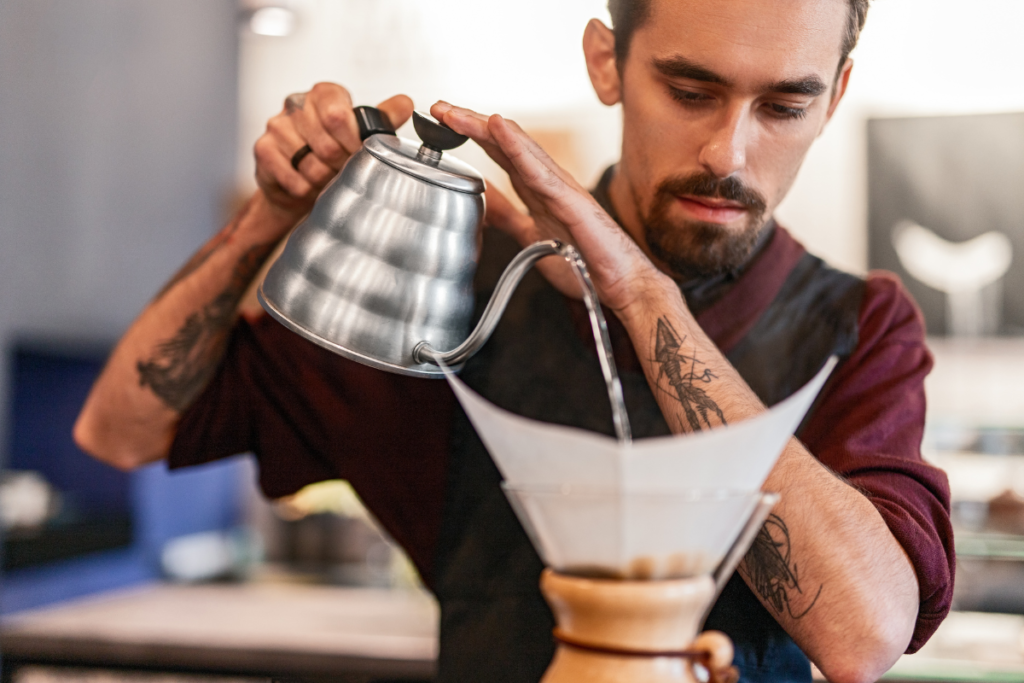
Pour Over Brewing Process
The pour over method of brewing coffee is a fine-tuned process that involves specific steps to extract the best flavors from the coffee grounds. Here’s an overview of the pour over brewing process:
- Grind the Coffee Beans: Start by grinding fresh coffee beans to a consistency similar to sea salt. It’s important to use a burr grinder for an even grind, which is crucial for optimal flavor extraction.
- Coffee-to-Water Ratio: A standard ratio for pour over coffee is approximately 1:17, meaning one part coffee to seventeen parts water. For a 12-ounce cup, this translates to about 0.7 ounces of ground coffee. This ratio works out to roughly 60 grams of coffee per liter of water used for brewing. For a 340 – 350 ml cup, use roughly 20g of coffee to achieve this ratio.
- Rinse the Filter: Before adding your coffee grounds, rinse the paper filter with hot water. This helps remove any papery taste and preheats your brewing equipment.
- Prepare the Pour Over Setup: Place your filter in the pour over brewer, such as a Chemex or a Hario V60. If using a scale, place the setup on it and tare to zero.
- Add Ground Coffee: Add the ground coffee to the filter, ensuring an even spread.
- Boil Water: Heat water to boiling and then let it cool for a minute or two. The ideal temperature for pour over coffee is between 195 and 205 degrees Fahrenheit.
- Bloom the Coffee: Pour a small amount of water over the grounds to saturate them evenly. This stage, known as the bloom, allows gases to escape and the coffee to expand. It should take around 15 seconds.
- Continue Pouring Water: After the bloom, continue adding water in a circular motion, starting from the center and moving outwards. The pouring should be done gradually, pulsing around 50g or 1.8 ounces of water into the brew every ten seconds or so until the desired brew weight is achieved. It is best to use a scale for this process.
- Complete the Brew: Continue the process until you have brewed the desired amount of coffee.
- Discard the Filter and Serve: Once the brewing is complete, discard the filter and grounds. Your pour over coffee is now ready to enjoy.
This method of brewing is known for its ability to bring out the nuanced flavors of the coffee, offering a clean and complex cup.
French Press Brewing Process
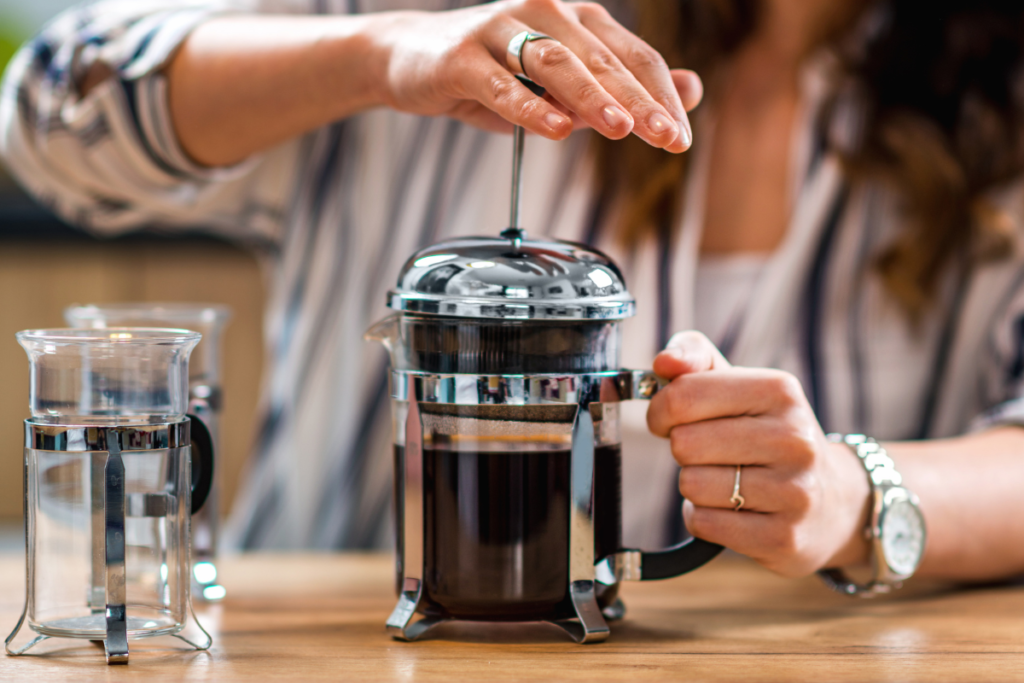
The French press method is known for its simplicity and ability to produce a rich, full-bodied cup of coffee. Here’s a step-by-step guide to brewing coffee with a French press:
Preparation: Begin by warming up your French press. Rinse it with very hot water to maintain the temperature during brewing, which is crucial for the best extraction of coffee flavors.
Coffee Measurement and Grinding: Measure out your coffee, aiming for a ratio of about 60 grams of coffee per litre of water. If you use 350ml of water, aim for 20g of coffee for the brew. If you prefer using ounces, this ratio is roughly 2.2 ounces of coffee per 35 ounces of water used.
Adding Water: After discarding the hot water used for warming, add the ground coffee to the empty press. Then, add hot water just off the boil (around 205°F). Start by filling it halfway to ensure all the grounds are saturated and there are no dry spots.
Stirring: After adding water, wait for about a minute and then gently stir the mixture. This step is important to break the top layer, known as the crust, and to ensure even extraction. Use a wooden spoon or spatula to avoid damaging the glass.
Completing the Water Addition: Fill the French press to the top with water. Place the lid on, but do not press it down yet. Let the coffee brew.
Brewing Time: The ideal brewing time for French press coffee is about four minutes. This timeframe allows for the full extraction of flavors without over-extraction, which can lead to bitterness.
Pressing the Plunger: Once the brewing time is complete, press the plunger down firmly but gently. If the coffee grounds are too thick, it may be harder to press. In such cases, pull up the plunger slightly and press down again.
Serving the Coffee: Immediately after pressing, serve the coffee to avoid over-extraction, which can happen if the coffee remains in the brew water or unpoured for too long. Pour the coffee into a carafe or directly into cups.
Remember, the French press allows for experimentation with brewing times and coffee-to-water ratios, so feel free to adjust the parameters to suit your taste preferences.
Weird Coffee Tip: An excellent brew can only be made with excellent coffee. Using the best type of beans for your brewing method is critical for producing a good cup of coffee. To learn how to find the best coffee for use in a Franch Press, take a look at this article:
Best Coffe For French Press
Flavor and Texture Comparison
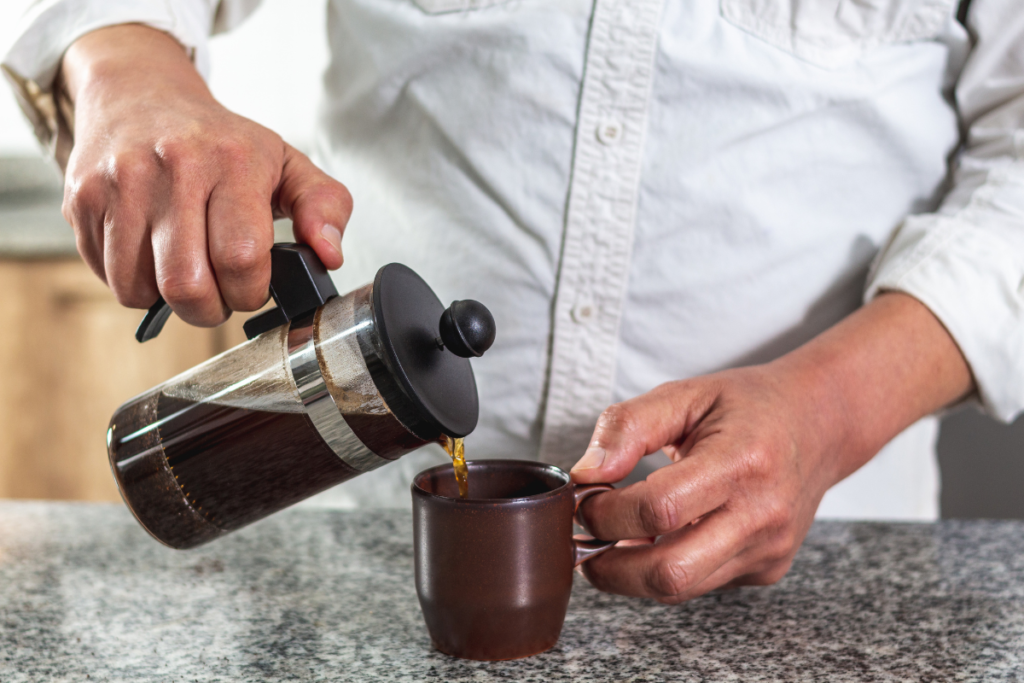
Pour over and French press coffee brewing methods create distinctly different flavors and textures, catering to varied personal preferences.
Pour Over Coffee: Clarity and Nuance
Pour over coffee is characterized by its clean and crisp taste, primarily due to the use of paper filters. These filters effectively remove excess oils and fine particles, resulting in a smooth, refined flavor that highlights the subtle notes and nuances of the coffee beans.
This method produces a cup of coffee with minimal oils and no sediment, offering a smoother mouthfeel and less bitterness compared to French press coffee. The pour over method is excellent for those who appreciate the delicate and bright flavors in coffee, such as floral and fruity notes.
French Press: Boldness and Body
In contrast, French press coffee is known for its robust and intense flavor profile, with a thicker mouthfeel. This method involves steeping the coffee grounds in hot water and then filtering them with a plunger equipped with a metal mesh. The lack of a paper filter means that more oils and fine coffee particles are present in the final brew.
These oils and sediments contribute to a full-bodied mouthfeel and a strong, rich taste. French press coffee typically highlights the earthy, deep flavors of the coffee, making it a favorite for those who prefer a bold and substantial cup. However, this method can sometimes result in a slightly murkier coffee with more visible sediments.
Practical Considerations When Using These Brewers
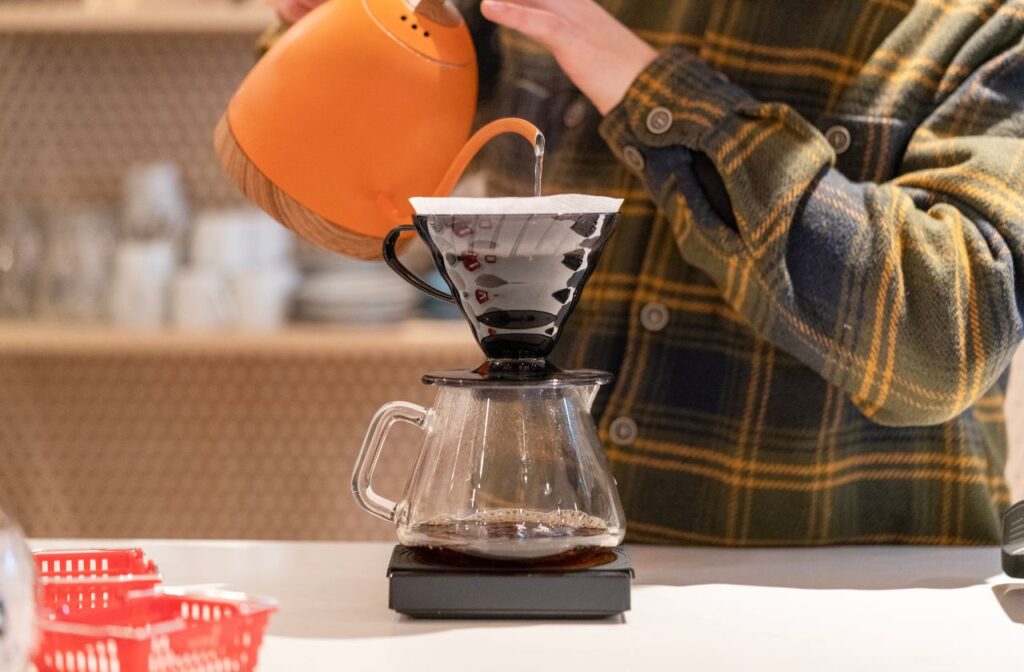
Pour Over Coffee Brewers
- Initial Cost: The price range for pour over coffee makers typically varies from about $30 to $70. This price can depend on whether you opt for a high-end or low-end model.
- Ongoing Costs: Pour over coffee makers require the use of paper filters, which need to be replaced after each use. This recurring cost can add up over time. Additionally, certain brands like Chemex require specific filters, which might be more expensive.
- Coffee Type and Quality: Pour over coffee makers are known for producing a cleaner, lighter cup of coffee with a smooth taste. They are ideal if you enjoy exploring the subtle flavors of different coffee beans.
French Press Coffee Brewers
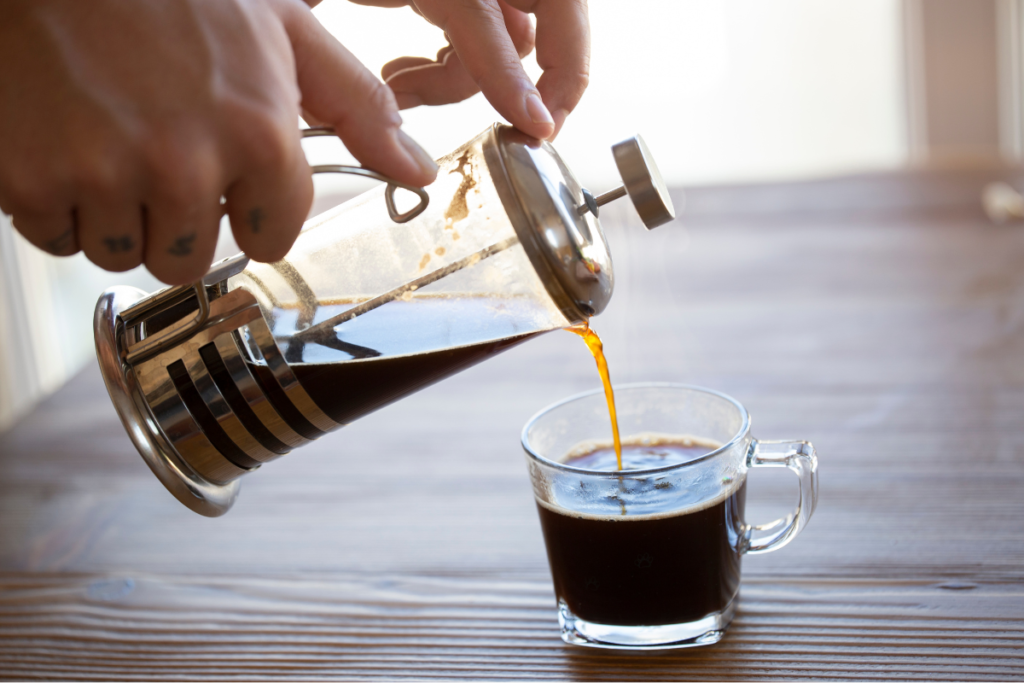
- Initial Cost: French press coffee makers are generally more affordable, with prices ranging between $10 and $70. Like pour over makers, the quality and features of the French press can affect its price.
- Ongoing Costs: One of the advantages of French press coffee makers is the lack of need for additional accessories like paper filters. The built-in mesh filter is reusable, which reduces long-term costs.
- Coffee Type and Quality: French press coffee is known for its rich, bold flavor. It produces a full-bodied cup of coffee with more pronounced oils and sediments, offering a stronger brew compared to pour over coffee.
Your choice between pour over and French press coffee makers should consider both the initial investment and the ongoing costs associated with each method. Additionally, personal taste preferences play a significant role in this decision.
If you prefer a smoother, lighter coffee and don’t mind the extra expense on filters, pour over might be the better choice. On the other hand, if you enjoy a bolder, more intense coffee and are looking for a more cost-effective long-term option, a French press would be more suitable.
Conclusion
Pour over is known for its cleaner, nuanced flavor and precision in brewing, but it requires filters and more time for preparation. On the other hand, the French press is praised for its robust and full-bodied brew, ease of use, and cost-effectiveness in the long run, as it doesn’t require additional accessories like filters.
Ultimately, the choice between pour over and French press depends on individual taste preferences, lifestyle, and environmental considerations. Both methods can provide a delightful coffee experience when executed properly.

